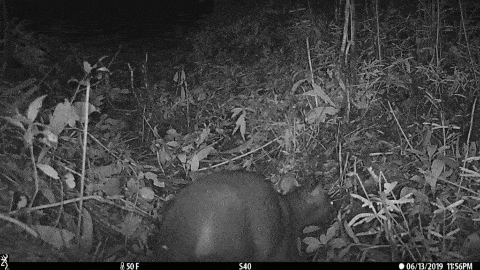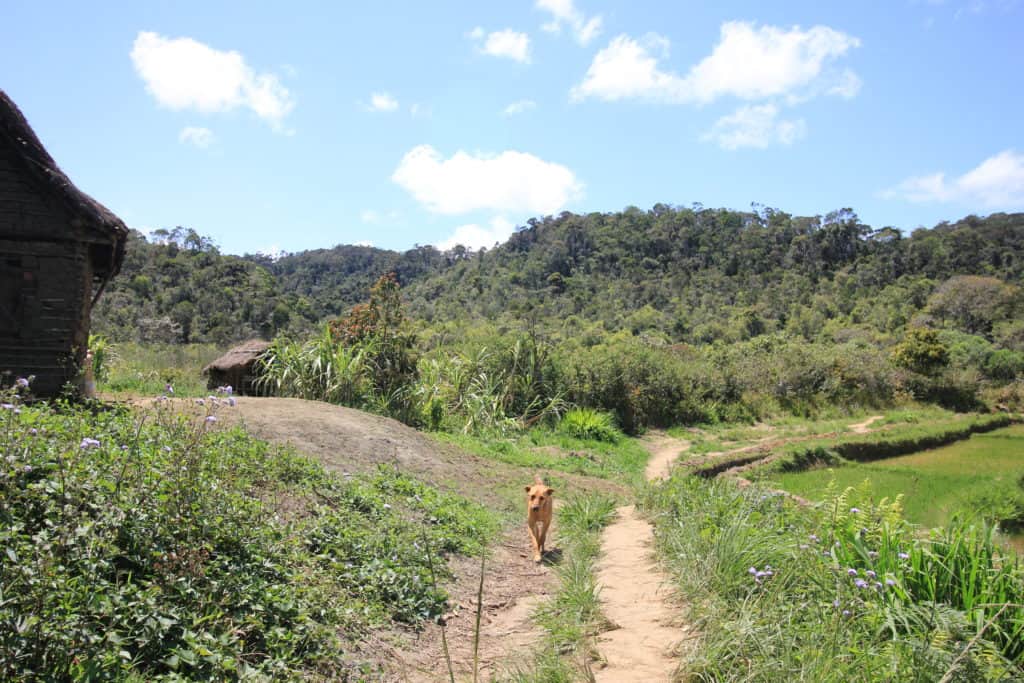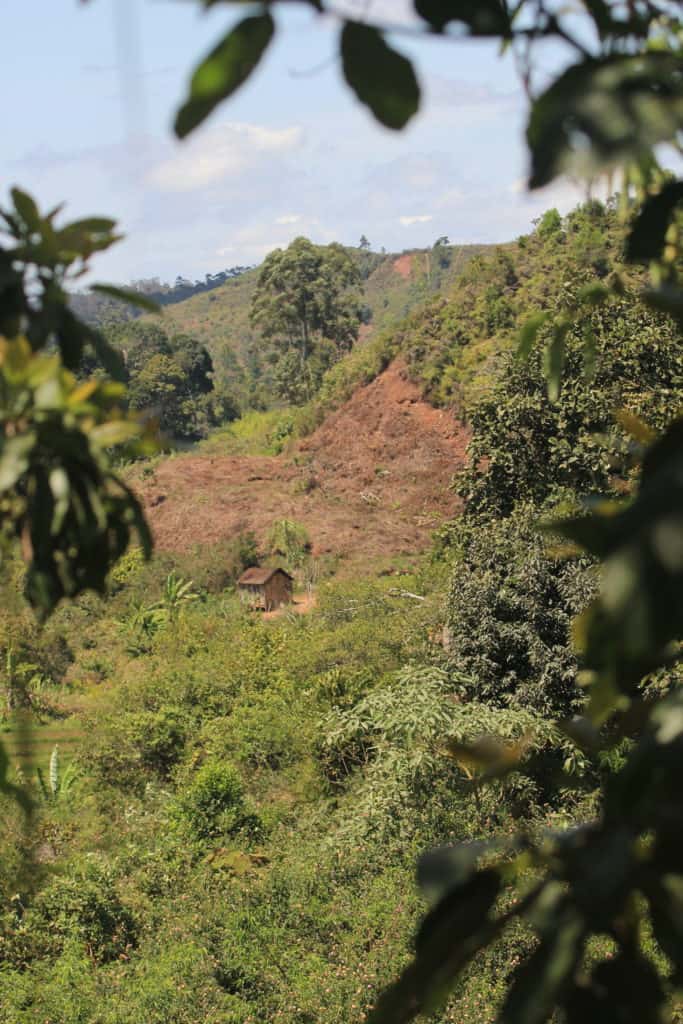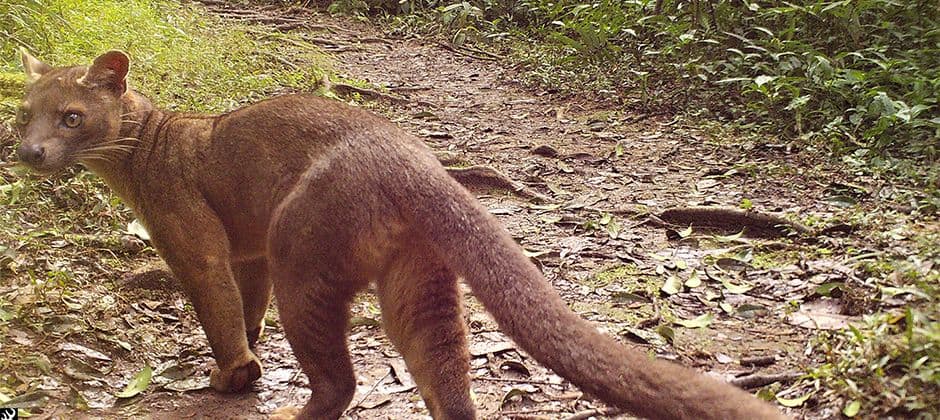Share this article
TWS2020: How do dogs and cats impact Madagascar carnivores?
Erin Wampole heard the trumpeting sounds of indri (Indri indri) calling to one another in the Madagascan tropical forests. The large lemurs were her morning alarm clock, waking her up to days spent hiking through the dense forests of Andasibe-Mantadia National Park, deploying camera traps.
“People usually don’t go back there and get the opportunity to see species like lemurs,” said Wampole, a master’s student at the University of Rhode Island working in assistant professor Brian Gerber’s lab.
But for Wampole’s research, featured in a presentation at The Wildlife Society’s virtual conference this year, she was focusing on species that were much more cryptic.

A fosa rolls on the ground. Credit: Erin Wampole
Wampole was studying five species of euplerids, small carnivores distantly related to mongooses: the fosa (Cryptoprocta ferox), fanaloka (Fossa fossana), falanouc (Eupleres goudotii), broad-striped vontsira (Galidictis fasciata), and ring-tailed vontsira (Galidia elegans). She and her colleagues were looking at how free-roaming dogs and cats, as well as forest edges, affect these species, which are suffering from the effects of habitat loss. While protected areas are increasing in Madagascar, she said, anthropogenic activity still occurs at the forest edges.
Wampole knew from other research that the species have been declining over the years, but she wanted to know if dogs and cats posed the biggest threat. The invasive predators are larger than the native euplerids, putting them at risk. “This is super important,” she said. “Do we need to be focusing on habitat, or if we keep dogs and cats out of the area, will they be OK?”

Free-roaming dogs like this one can prey on native Madagascar predators.
Credit: Erin Wampole
Wampole and her colleagues placed camera traps in different types of areas with and without dogs and cats, including forest edges and interior forests. Finding edges without dogs and cats was a challenge.
“We knew from previous research, the closer to a village, the more likely dogs and cats were to be there,” she said.
She wondered how they would find forest centers with dogs and cats, but the team found areas where roads were sparse and villagers walked through with dogs and cats in tow.

The distance to villages usually meant more dogs and cats present. Credit: Erin Wampole
The team ended up sampling photos from 78 trail cameras — two other cameras were stolen. After analyzing their detections, the researchers found that different species saw different effects. Falanouc and fanaloka were negatively affected by dogs and cats. Fosa, however, saw more impacts from the forest edge.
“That was really interesting because previous research doesn’t show that forest edge is a big deal for them,” Wampole said.
The research gives an indication that these factors are impacting different species in different ways. Managers are facing encroaching villages into parks, but they also need to tackle impacts from dogs and cats, she said. “If we help these species by reducing dogs and cats, which is fairly easily done with spay and neuter clinics, it could have a huge impact for these species.”
Conference attendees can visit office hours for this contributed paper on Friday, Oct. 2 from 1:00 p.m. to 2:00 p.m. to learn more and ask questions.
Header Image: Fosa like this one were more impacted by forest edge than dogs and cats. Credit: Erin Wampole








